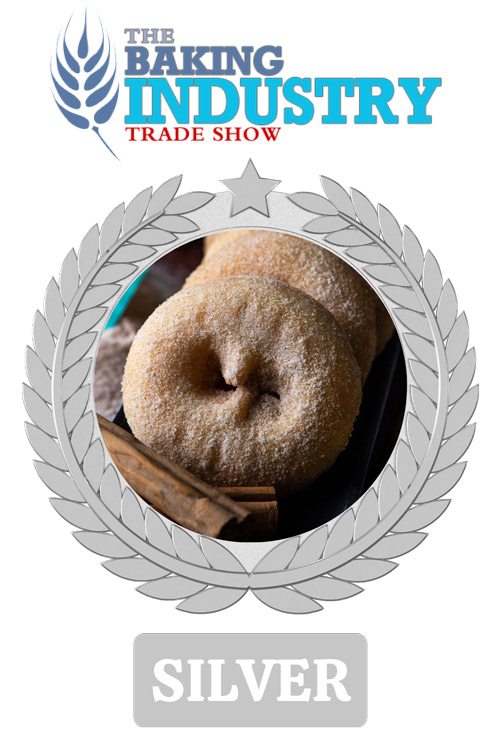OMG! Decadent Donuts was privileged to be invited to attend and supply donuts at the Wesley Research Institute’s launch of their new Coeliac Research Network where they unveiled plans for Australia’s first Coeliac Screening Clinic to investigate the genetic link that runs in families.
It was a fascinating event which both informed the audience and called for people to participate in trials on the treatment and management of Coeliac Disease.
With so many people with Coeliac Disease in the room, our donuts were gone in a twink of an eye. We were chuffed that everyone loved them so much!
Associate Professor Dr James Daveson presented a fabulously informative talk, along with many other experts in the field and also a number of people who have a lived experience with Coeliac Disease.
A number of those who had Coeliac Disease spoke about how treatment (and food options) has changed over the past 30 years or so. They were passionate advocates of people volunteering for trials. As first-degree relatives are often impacted with the condition, their passion for finding better treatments and raising awareness was less for themselves and more for their children and grandchildren.
The event also explained some of the history of Coeliac’s Disease. Many OMG! Decadent Donut customers have told us that they get so frustrated when people don’t take Coeliac Disease seriously and when other people claim eating gluten free as a ‘fad’.
If it’s a fad, it’s a blinking long one!
How Coeliac Disease Started.
As early human diets began to expand, adding in grains, domesticated livestock and cultivated crops, most bodies were able to adapt—however, some did not and certain food sensitivities, intolerances and coeliac disease made their first appearances in human history.
Before the true trigger for coeliac disease, the protein gluten, was discovered, many treatments and diets were tried, including strict rice, mussel and even banana diets. It wasn’t until World War II that first wheat and finally gluten began to come into focus as the culprit.
Coeliac Disease is now recognised a serious, genetic autoimmune disease. It is believed that Coeliac disease first began in humans at the advent of the first agricultural revolution.
In 2008, an archaeology dig in Cosa, Italy revealed an 18-20-year-old woman from the first century AD, with signs of failure to thrive and malnutrition. The skeleton showed the presence of the coeliac gene HLA-DQ2.5 and damage typically seen from Coeliac Disease. Fairly sure that 2000 years is a bit more than a fad.
How Coeliac Disease Got Its Name.
About 8000 years ago, Greek physician and medical writer Aretaeus of Cappadocia wrote the first medical description of Coeliac Disease. He actually named it “koiliakos” meaning suffering abdomen. He described it as “If the stomach be irretentive of the food and if it pass through undigested and crude, and nothing ascends into the body”. Fairly sure 8000 years is longer than your atypical fad as well!
How Treatment Evolved
In the 1800s British physician and pathologist Matthew Baillie described a chronic gastrointestinal condition that responded to a rice-heavy diet. He noted in a publication that those who suffered from the disorder experienced chronic diarrhea and malnutrition. He wrote that he’d observed that “some patients have appeared to derive considerable advantage from living almost entirely upon rice.” This rice-heavy diet would most likely be very low in gluten, or even gluten-free, depending on what other ingredients were eaten—which would help those suffering from Coeliac Disease.
First Modern Medical Description
Also in the 1800s, English doctor Samuel Gee said people with “coeliac affection” can be cured by diet. Gee first presented the modern definition of Coeliac Disease at a lecture at the Hospital for Sick Children in London. He theorized that the disease needed to be treated through food, saying that he believed if a person were to be cured it would be through their diet. Gee tried multiple types of diets with his patients, including a Dutch mussel diet. However, during his lifetime he was never able to pinpoint which foods triggered the disease.
The Banana Diet ‘Cure’.
In 1924 American paediatrician Sidney Haas announced a banana diet to treat Coeliac Disease. Unsurprisingly this diet was high in bananas but also forbade starches. Before Dr. Haas’s “banana diet”, more than 30% of children with Coeliac Disease died. Since the diet was gluten-free (albeit unintentionally) and high in calories, it helped children with the disease heal their villi and their lives were saved. Parents from all over the United States brought their children with Coeliac Disease to Dr. Haas to be treated. The banana diet continued to be used to treat some children until the early 1950s. It did have its downsides though, as many believed that once the children were believed to be “cured” they would then go back on a normal, gluten-containing diet, which lead to damaging the villi and a host of other serious side effects.
Protein From Wheat Identified As The Culprit.
In the 1940s Dutch paediatrician Willem Dicke hypothesized that wheat protein may be the culprit to triggering Coeliac Disease. He made the connection during WWII, when during the Dutch Famine, bread became unavailable in the Netherlands. Dr. Dicke noticed that throughout this time, the mortality rate for Coeliac Disease dropped to zero in his hospital. He went on to develop a wheat-free diet.
Medical Team Publishes Their Findings About Wheat and Rye Flour re Coeliac Disease.
The English medical team shared results of studies showing how Coeliac Disease patients improved when wheat and rye flour was removed from their diets. Gluten, the protein found in wheat, barley and rye, was later pinpointed as the exact trigger for Coeliac Disease.
First Oral Biopsy On A Child With Coeliac Disease.
In 1956 German-British gastroenterologist and medical researcher Margot Shiner discovered a new technique to biopsy intestines. This jejunal biopsy instrument helped in the diagnosis of Coeliac Disease, among other GI disorders. She has been credited with launching the specialty of modern paediatric gastroenterology.
Coeliac Disease Is Recognized As An Autoimmune Disease And Genes Are Pinpointed.
In the 1970s, the HLA-DQ2 gene was associated with Coeliac Disease and dermatitis herpetiformis. Then in the 1980s, the connection between Coeliac Disease and autoimmune diseases, such as Type 1 Diabetes, becomes accepted within the medical community. By the early 1990s, Coeliac Disease is accepted as an autoimmune disease with a specific gene (either HLA-DQ2 or HLA-DQ8). While in 1997, The role of the antigen tissue transglutaminase (TtG) in Coeliac Disease is discovered.
Removal of gluten from the diet remains the only way to manage Coeliac Disease but the exciting work by Wesley Research Centre and support by Coeliac Australia means treatment, diagnosis and management of it continues to improve.
Queensland’s Wesley Research Institute is a world leader in Coeliac Disease research. Their scientists are developing breakthroughs in diagnosis and treatment. Wesley Research Institute is an independent, not-for-profit charity and the official research partner for UnitingCare hospitals.
We at OMG Decadent Donuts are proud of our product being endorsed by and all our licensees being trained and accredited by Coeliac Australia.









